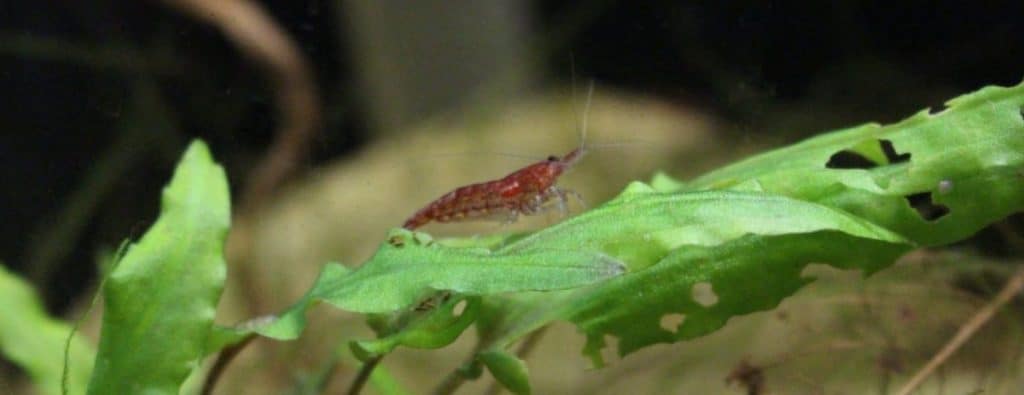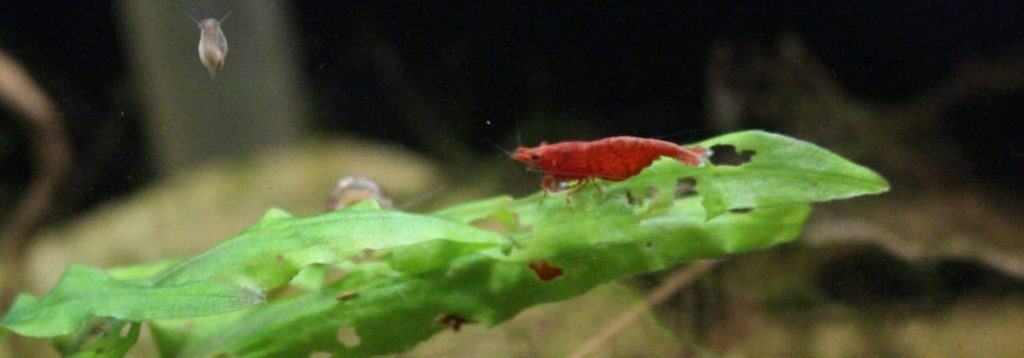Do your little shrimp need a filter in their tank? It’s a hot topic in the shrimp community, with some folks saying they’re a must-have and others saying they’re unnecessary. In this article, we’ll dive deep and explore the pros and cons of filters in shrimp tanks to help you make an informed decision.
Shrimp do not require a filter in their aquarium, as they come from environments with little to no filtration. However, a properly functioning filter can improve water quality, resulting in a healthier environment for the shrimp.
It is ultimately up to the owner to determine if a filter is necessary for the specific shrimp tank setup and maintenance plan.
Hold up, shrimp fans, don’t jump to conclusions just yet! There’s more to the story; if you keep reading, you’ll learn all the deets on filters and shrimp and decide to have your shrimp live their best life. Trust me; it’s worth a read, don’t be a shrimp out of water!
The Role of Filters in Shrimp Tanks
A filter is a device that helps keep your shrimp tank’s water clean and clear. It does this by doing a few different things like straining out all the big gunk like uneaten food and poop with mechanical filtration, breaking down all the yucky stuff like ammonia and nitrites with biological filtration, and removing impurities and discoloration from the water with chemical filtration.
- First, we have mechanical filtration, which works by using a filter media like a sponge or ceramic rings to strain out all the big chunks of debris. Think of it like a big sieve that catches all the unwanted gunk and keeps it out of the water.
- Next, we have biological filtration, which is all about good bacteria. These little guys live on the filter media and break down all the yucky stuff like ammonia and nitrites, which can be harmful to shrimp, into less harmful compounds like nitrates. It’s like having a clean-up crew in your aquarium 24/7.
- Lastly, chemical filtration uses things like activated carbon to remove impurities and discolorations from the water. It’s like a spa day for your shrimp, leaving them crystal clear and pure water.
It’s good to know that not all filters are created equal, and you can pick and choose which type of filtration you want in your tank. It depends on your shrimp’s tank setup and maintenance schedule.

The Needs of Shrimp
To give them the best possible home, it’s essential to understand where they come from and what they need to thrive.
Shrimp are found in a variety of freshwater and saltwater environments. In the wild, they typically live in slow-moving bodies of water like streams, rivers, and swamps. These environments usually have low levels of filtration and are often murky or cloudy. So it’s important to note that shrimp don’t need a filter to survive, unlike other fish species.
When it comes to basic care, there are a few key things shrimp need to keep them healthy and happy:
- Good water quality: Shrimp need clean, clear water that is well-oxygenated and free from harmful toxins like ammonia and nitrite.
- Proper diet: Shrimp are opportunistic feeders and eat various foods like algae, plankton, and even small pieces of fish or shrimp.
- The right temperature: depending on the shrimp species, they require different temperature ranges, and it’s essential to know and maintain the appropriate one for your shrimp.
It’s important to note that while shrimp don’t require a filter to survive, a properly functioning filter can improve water quality, resulting in a healthier environment for the shrimp. And it all comes down to the tank setup and maintaining a good water change schedule because shrimp-like clean and fresh water like us.

The Debate Over Filters in Shrimp Tanks
Let’s talk about the great debate: to filter or not to filter?
There are valid arguments on both sides. On one hand, some shrimp owners argue that filters are a must-have for shrimp tanks because they help keep the water clean and clear, improving overall shrimp health. They say that filters help remove debris, waste, and toxins from the water, which can harm shrimp. Additionally, filters can help to maintain a healthy balance of good bacteria in the tank, which is vital for breaking down waste and keeping the water clean.
On the other hand, some shrimp owners argue that filters can be harmful to shrimp. They say that filters can create too much current, which can stress shrimp out, and that filters can also remove beneficial bacteria from the water, negatively impacting shrimp health. They also argue that frequent water changes, proper feeding, and healthy plants can provide enough filtration without adding a filter.
As for expert opinions, you can find a wide range of them. Some experts argue that filters are necessary for shrimp tanks, while others say they’re not. The critical thing to remember is that no one shrimp tank is the same, and the right choice for one shrimp owner might not be the right choice for another.
It’s essential to do your own research and seek expert opinions to make an informed decision on whether to use a filter in your shrimp tank. But also, remember that it also comes down to the specific tank setup and maintenance schedule you have; what works best for one shrimp tank might not work for another.

Conclusion
We’ve covered a lot of ground on this topic, so let’s bring it all together. In summary, filters help keep your shrimp tank’s water clean and clear. They do this by removing debris, waste, and toxins from the water and maintaining a healthy balance of good bacteria in the tank. While filters can be beneficial for shrimp tanks, they are not strictly required for shrimp.
As for our recommendation, whether or not to use a filter in your shrimp tank ultimately comes down to your specific tank setup and maintenance schedule. Some shrimp owners find filters a must-have, while others can maintain a healthy tank without them. Do your own research and seek expert opinions to make an informed decision that’s right for you and your shrimp.
As for tips, regardless of whether or not you choose to use a filter in your shrimp tank, here are a few things you can do to provide a safe and healthy environment for your shrimp:
- Keep the water clean and well-oxygenated by performing regular water changes.
- Feed your shrimp a varied diet that’s appropriate for their species.
- Maintain the appropriate temperature range for your shrimp species.
- Add healthy plants to your tank to provide natural filtration, oxygenation, and a source of food.
- Keep an eye on water parameters, such as pH and ammonia levels, and take action if they start to get out of the appropriate range for your shrimp.
In the end, the key to a happy and healthy shrimp tank is understanding your shrimp’s needs and providing a suitable environment for them. With the proper care, your shrimp will swim and thrive in no time!
